Heritage, history, and Dhakaiya food in Bangladesh
Guests can dine like Dhaka’s old aristocracy, wander through the garden of a well-preserved colonial home, and dive into the history of this Zamindar family.

Fork the System is Al Jazeera’s home for all things food. From Syria to Uganda, Bangladesh to Colombia, we look at how food makes us, a forkful at a time, generation after generation.
Begum Bazar Road in Dhaka’s Old City bustles with people, rickshaws, cars, and beasts of burden, going about the business of the day. But the hubbub recedes as we turn left onto Nur Baksh Lane, too narrow for even a rickshaw. In this part of Dhaka, the relentless modernity that has metamorphosed other parts of the city into frenetic centres of activity has stayed away from the quaint buildings and narrow, crisscrossing alleyways.
Keep reading
list of 3 itemsTwo women start eatery in Albania to help Afghans feel at home
The Great British Curry Crisis
Just as the lane prepares to turn right and further into the Old City, one particular nondescript outer wall appears on the right. From the outside, it looks just like the other walled homes on the street, but this one is special.

A smiling gentleman in a well-worn black princely coat and a tasselled red tarboosh opens the gate, a vision straight out of a history book.
“Welcome to my home,” 57-year-old AM Emran says, “You won’t find another one like it in the city.”
As he moves aside, a well-kept colonial home appears behind him, surrounded by a garden. The simple rarity of this patch of green in such a crowded, built-up capital seems to hint that he may well be justified in his claim.
Emran’s Heritage Home offers the only heritage dining experience in Dhaka, and more. The 200-year-old house has seen a veritable Who’s Who of the subcontinent’s history-makers come through its doors for meals and visits. While it is not the only Dhaka home of that period – or earlier – that is preserved, it is unique.
Visitors find their way here for the food, but that comes after Emran offers a quick tour of the museum-worthy interior of his home and offers a peek into how the old aristocracy used to live.
Preserving heritage
“Everything you see here is almost 200 years old, give or take,” Emran, a sixth-generation descendant of a land-holding Zamindar family, told Al Jazeera, gesturing around the spacious, high-ceilinged living room.
The house was built in the early 19th century by Moulavi Abul Khairat Muhammad, a third-generation Zamindar from Dhaka and Sonargaon, a town half an hour away. Muhammad was a descendant of Munshi Alam, who had come to the subcontinent from Yemen around 1740, in the later Mughal period. He was given a Zamindari by the emperor in recognition of his work as a revenue collector.
A set of ornate Victorian couches sits in a friendly grouping near a wall under a display of paintings, a sword, and an antique plate. By the windows stand a small bookshelf crammed with vintage tomes and a pure Burma teak antique wooden bed covered with a buttery velvet spread.
Two sideboards display even more antique plates and Victorian crockery, and everywhere are photos and paintings celebrating the storied past of this house.
“I inherited all these things from my ancestors and I tried to keep them well,” Emran said, “The couch where you are sitting now has seen six generations of my family.”
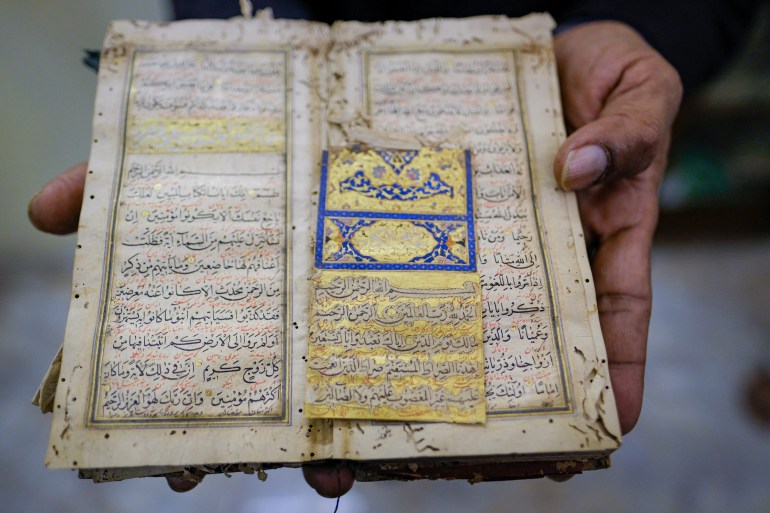
The paintings on the wall, Emran says, were painted by his paternal grandfather, Abu Zafar Ziaul Haque, who was awarded a gold medal in fine arts by Aligarh Muslim University and had gone on to design the famous Dhaka New Market.
He follows that up with a breathtaking peek at a small book that he opens to reveal an illuminated Quran, hand-written and decorated with gold leaf. “It’s more than 400 years old. My ancestor Munshi Alam wrote it in his own hand. He was a scholar of Islam.
“Yes, my family thrived on the money that it made from the Zamindari (land ownership) in Dhaka and Sonargaon but almost all of my ancestors were scholars. They were highly educated people who excelled in their respective fields,” said Emran.
Two old bookcases carry his family’s collection of rare books, a conservationist’s dream.
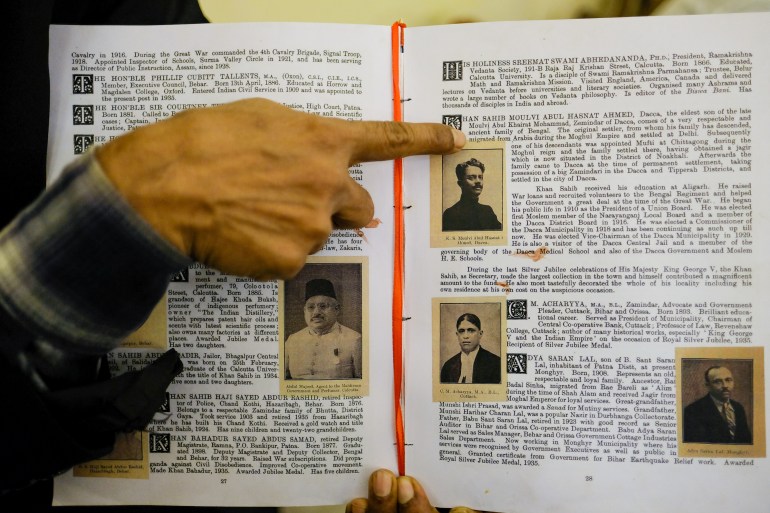
“My ancestors were known for their sophistication and good taste. But, more importantly, our household was known for its hospitality and foods and that’s why it was frequented by many important historic personalities,” Emran said.
Dhakaiya hospitality and foods
“The kitchen in our house never cooked the same food for lunch and dinner,” Emran said. In fact, he added, so creative were the cooks that some of the dishes that came out of the kitchens attained legendary status among the connoisseurs of Dhaka.
Like subdeg, a dish made with a large game-cock – or khashi-morog. The whole bird was marinated in yoghurt, ginger, garlic, cumin and other spices overnight and then it was confited in pure deshi-ghee (clarified butter) for another 12 hours.
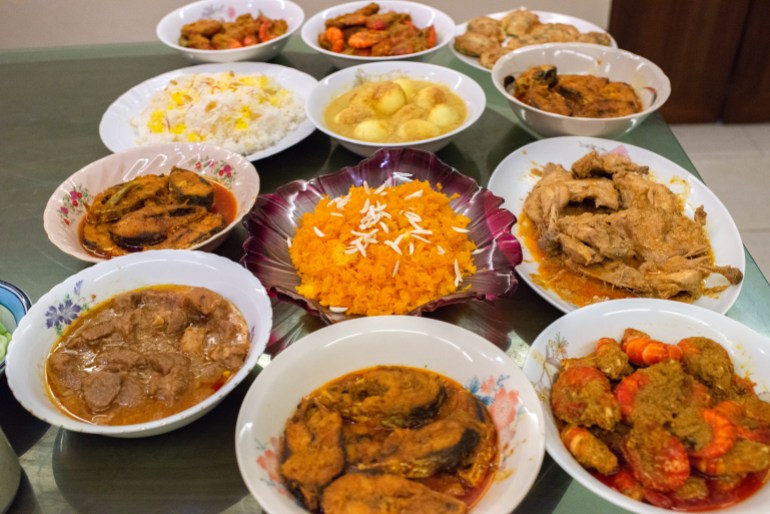
And motanzel, another speciality of the family’s chefs. It was a melt-in-the-mouth biryani dish made with chicken or beef and remarkable for its distinctive khatta-mittha (sweet-sour) flavours.
Motanzel “was the favourite food of Nawab Salimullah”, Emran says. “He used to ask my great-uncle Abul Hasnat to have motanzel prepared for him.”
Nawab Salimullah, the fourth nawab (ruler) of Dhaka from 1901 until his death in 1915, would come to the house to visit Emran’s grandfather Ziaul Haque and his brother Abul Hasnat. Salimullah was a philanthropist and huge proponent of education and Muslim nationalism. Among the socioeconomic development projects he was involved in was a huge donation to establish the Dhaka Engineering School – currently the Bangladesh University of Engineering and Technology. Today, he is buried in the family graveyard nearby, on Begum Bazar.
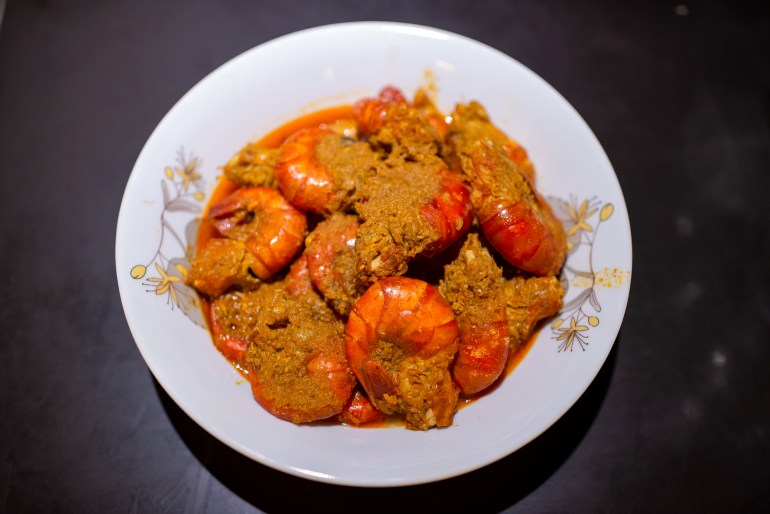
The two brothers also hosted AK Fazlul Huq, the first chief minister of Bengal from 1937 to 1943, although Emran does not know what the venerable statesman’s favourite dish was. The list goes on, as Emran tells visitors that Subhas Chandra Bose, the famous Indian revolutionary leader, also ate at his family home with his grandfather and great-uncle. As for Sheikh Mujibur Rahman, the founding father of Bangladesh, he was hosted by Emran’s father, AM Jahangir.
As Emran recounts tales of epic feasts worthy of royalty, tantalising smells start to waft out of the kitchen, making just hearing about the food no longer enough.
He leads the way through to the dining room, where he starts to lay out a dazzling array of dishes on a 200-year-old table that can be extended with extra leaves to fit even more banqueting guests.
Saffron, malai and ghee
The cooks in this magical home today are none other than Emran’s wife and three sisters, who prepare the dishes themselves using recipes that have been passed down for generations. It does no good to ask questions about ingredients or technique, they are all closely guarded family secrets.
One thing Emran will tell you, however, is that in the past it was a point of pride for the family to use the most expensive, richest ingredients, like saffron, malai (clotted cream) and ghee (clarified butter). Today, he says: “Saffron costs you more than $10,000 per kilo, yet we try to use it in our pulau. Perhaps, that keeps our food apart from the rest.”
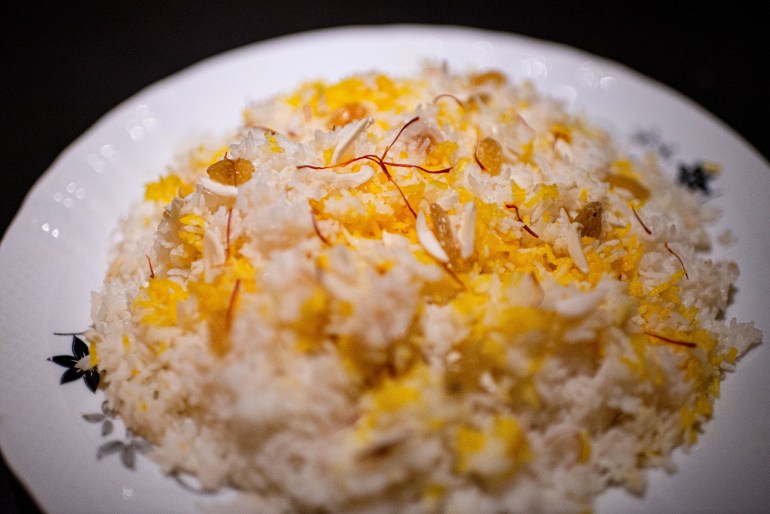
The pulau in question, zafrani pulao or saffron rice, is glowing on the table, nestled in among many other Mughal dishes, the likes of which have been eaten in Dhaka since the 17th century. Across the table is one more dish that still uses saffron, and cream: dimer shahi korma, or egg curry in a sweet yoghurt sauce, a paler, more delicate cousin to the more widely known Indian egg curry with its robust flavours and red sauce.
Emran makes sure to say that the foods being served may not be completely unique, but that they celebrate the exuberant culture of Dhakaiya eating in a way only this heritage restaurant can.
“These are Mughal-inspired dishes and some of the renowned restaurants in Old Dhaka sell fantastic morog mosallam or zarda. But in my house, you will get a unique experience along with the foods.”

Take the anarash ilish – as Dhakaiya as it gets, he says – made with fresh pineapples and Bangladesh’s national fish, the hilsa shad, prized as much for its rich roe as it is for its succulent flesh. The pieces of ilish sit in a spiced sauce, studded with cubes of fresh pineapple that add pops of distinctive sweet-tartness. Freshly blended pineapple juice is added to tempered spices and cubes of pineapple, then it simmers until the magic moment – which experienced cooks just know – before the seared fish is dropped in to finish cooking.
While it is happily bubbling away every day, the kitchen no longer produces the legendary dishes the family became so well known for, like subdeg. It would not be possible to put together something that expensive and time-consuming without having to raise prices and overwork Emran’s wife and sisters who have their hands full running the kitchen already without investing 24 hours to prepare the sublime poultry dish.
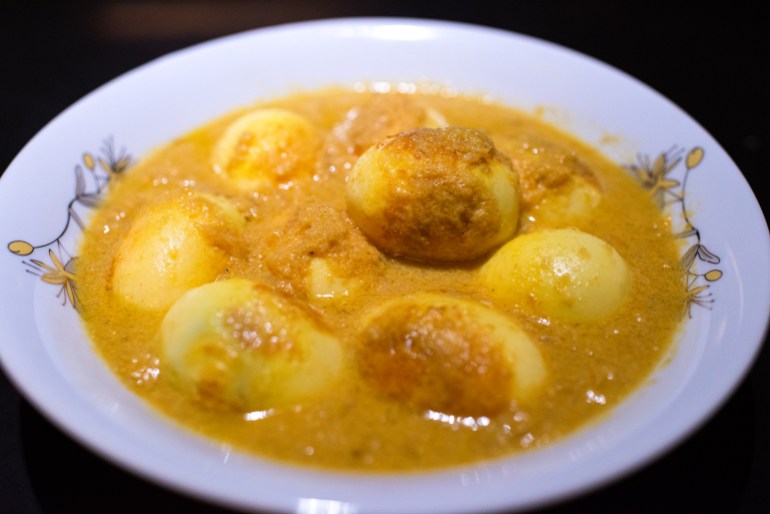
In its heyday, the family’s cooks had no problem with ornate, rich dishes to impress and fete the famous and fabulous people who came to visit. But those days started to wane when the Zamindari was cancelled in 1950 with East Bengal State Acquisition and Tenancy Act and the family lost a significant part of their wealth.
That did not mean the family stopped hosting – guests still came and went, and sometimes they even hosted passers-by who were curious to see the house and hear its stories.
But, Emran says: “We never thought of charging money for the dishes we served. But Taimur Bhai [Elder Brother Taimur] convinced me to open my kitchen commercially and start a heritage dining in our house. It was all his idea.”
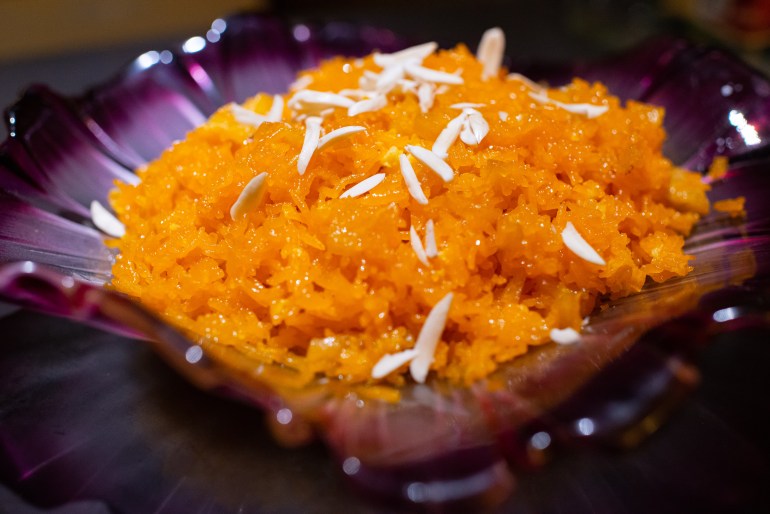
Taimur Islam is a passionate architect who has dedicated the past 18 years to a tireless effort to preserve Dhaka’s heritage architecture – in fact, some will say he is single-handedly responsible for protecting this architecture. An accomplished architect in his own right, he decided to start leading walking tours of Old Dhaka in 2004, taking people on educational walks to see the splendour that Bangladesh was in danger of losing.
It was through these walks that Islam got to know Emran and he was the one who convinced him in 2018 that it would be a good idea to start organising and charging for the heritage family meals that were being offered to visitors.
“As part of our heritage walk, we used to take people to Emran’s home as it was a well-preserved Armenian Neo-Classical architecture. The house was already famous for its hospitality, all the foreigners loved their house and their foods,” Islam told Al Jazeera.
“But I thought it was sort of a burden on them, treating us without getting paid, so I asked Emran to arrange paid lunches and dinners for my guests from the Heritage Walks.
“It took a lot of persuasion, these Old Dhaka aristocratic people are very proud and reluctant to take money for their hospitality.”
The move to organise access to the home has enabled Emran and his family to keep their doors open and sustain their effort to keep showcasing the foods of Dhaka.
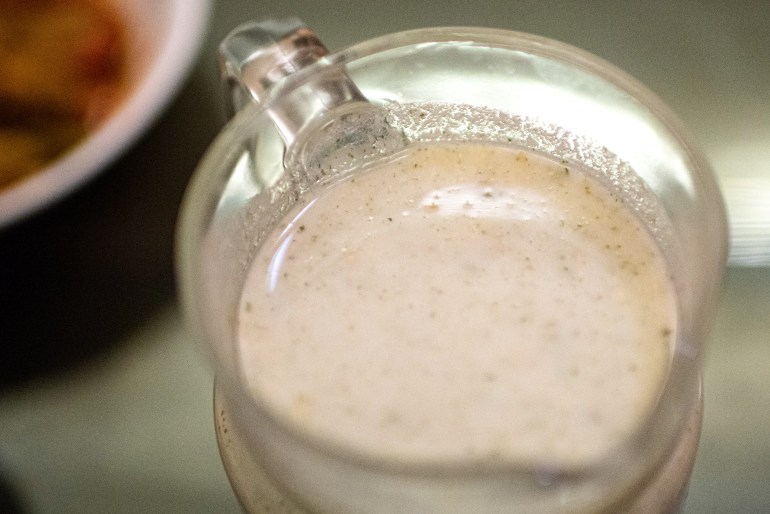
Foods like morog mosallam, a whole chicken cooked in a rich, creamy sauce full of nuts, ginger, and spices that practically falls off the bone in fragrant morsels. And changri malai, a flavourful curry of prawns in coconut milk tinted with tomatoes and spices.
And, Emran’s protestations of not being able to use expensive ingredients aside, there is still a generous hand pouring deshi ghee onto the gorur kata moshla, a beef curry cooked with whole spices and aromatics until it melts in the mouth.
Rounding out the meal are the comfort staples of murgir chop (a fritter of minced chicken and potatoes) and a simple salad of cucumbers and tomatoes. All washed down with borhani, a frothy, savoury yoghurt drink tinged green with mint and coriander. And, for dessert, zarda, a sweet rice dish made with milk and sugar and flavoured with cardamom, raisins and nuts.

Finishing off the meal, we, like many patrons before us, are grateful for the tireless efforts that resulted in this unusual home-cum-restaurant opening its doors to everyone interested in the heritage of Old Dhaka and the families who built it.
Today, there is a Heritage List of more than 90 protected properties similar to Emran’s Heritage Home, and it is the work of Islam and his colleagues that made it possible.
If you are in Dhaka and would like to be part of this unique dining experience, Emran’s Heritage Home takes bookings via its Facebook page. They cater to groups of five to 30 people and offer reservations in advance only.